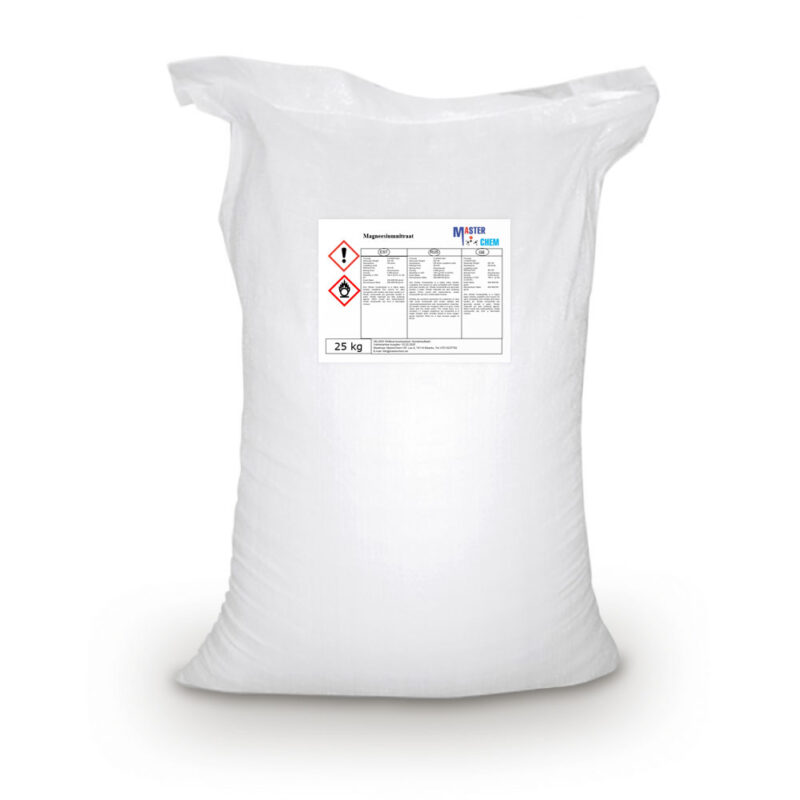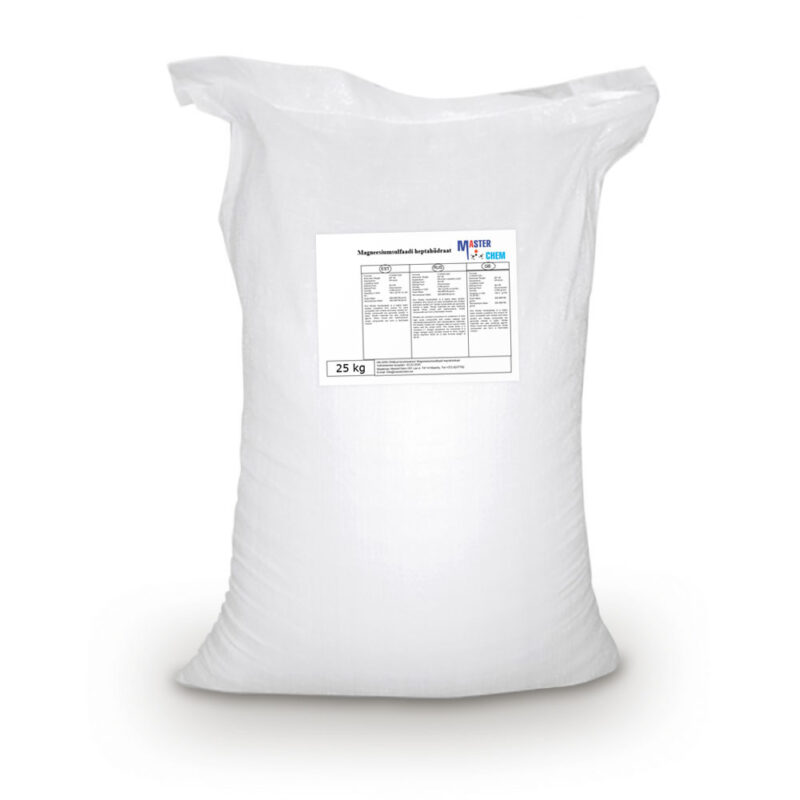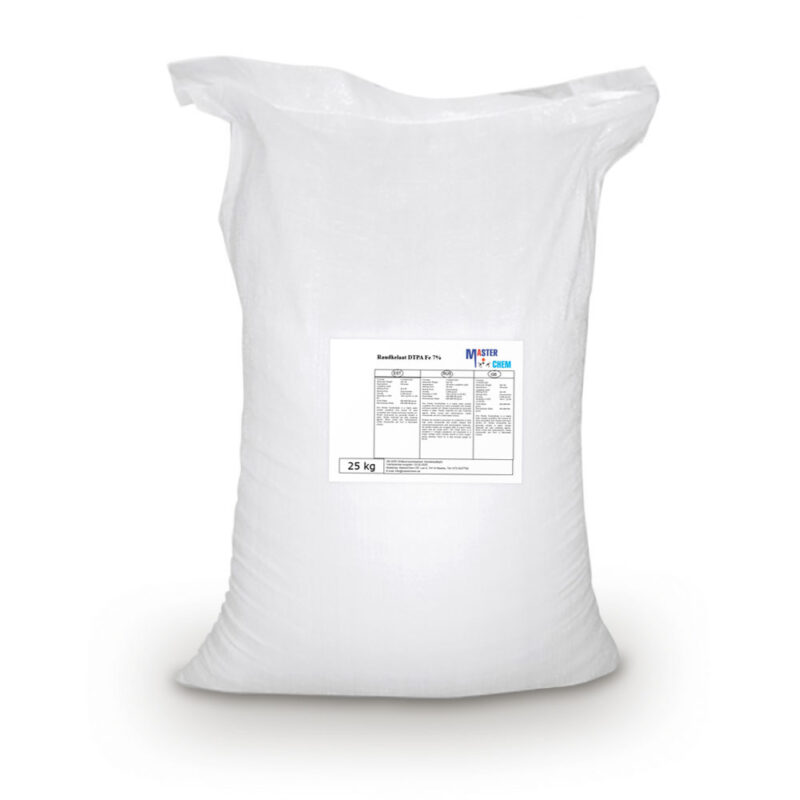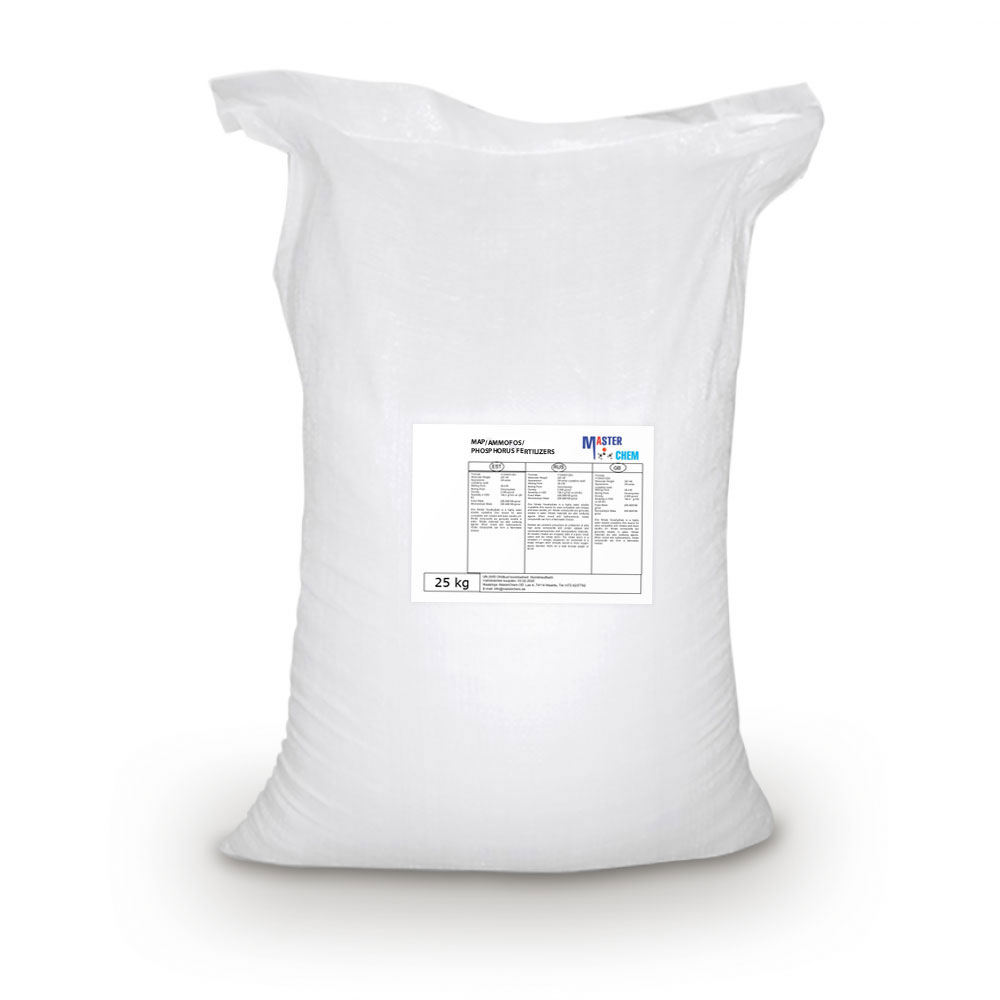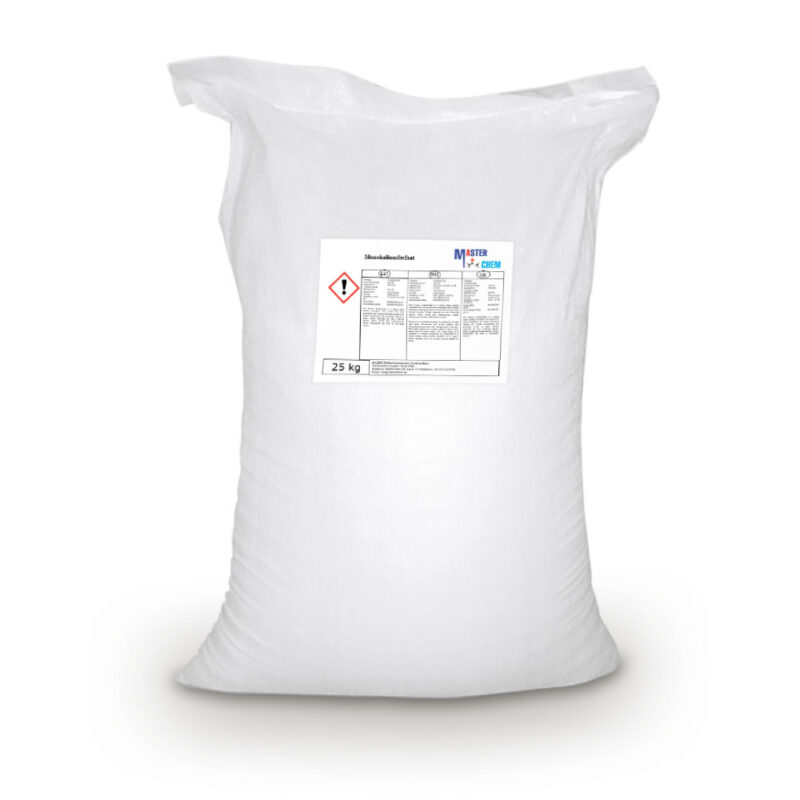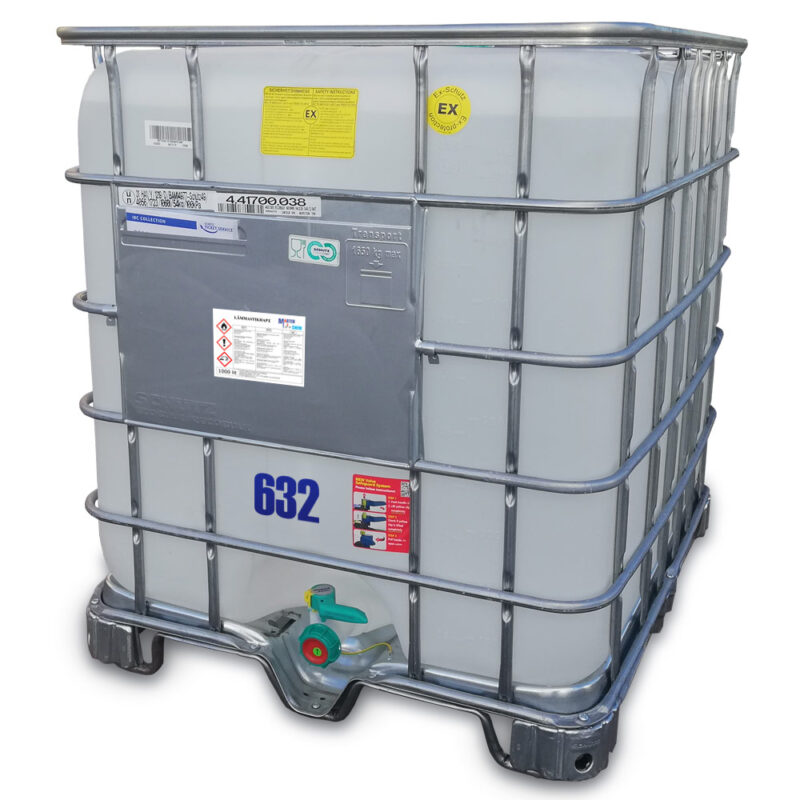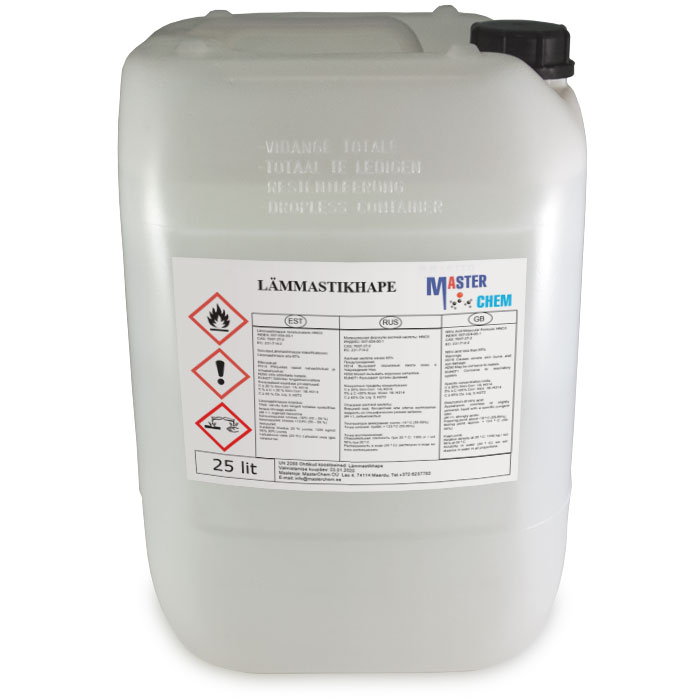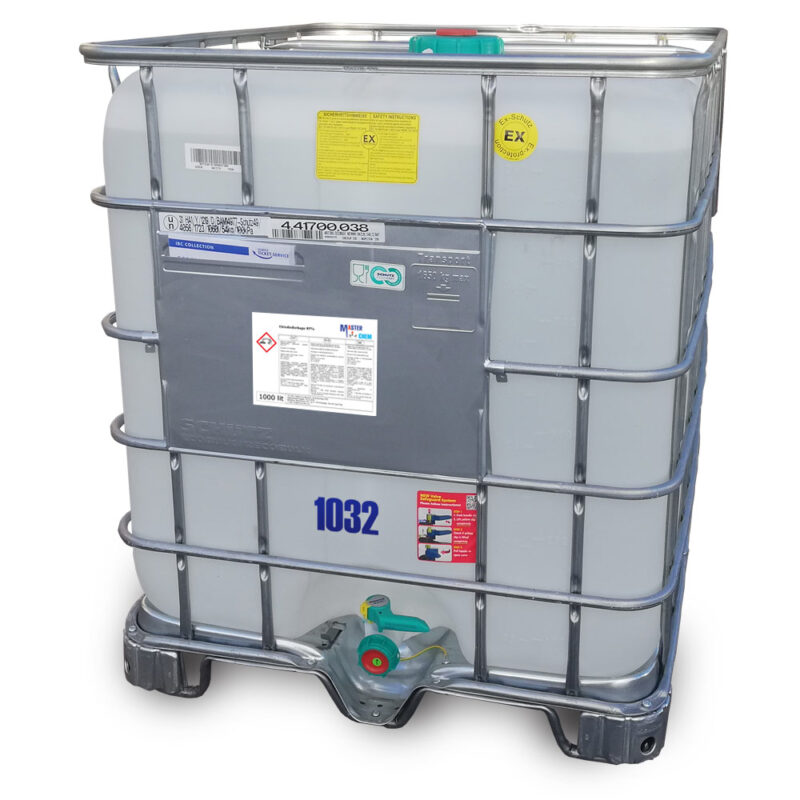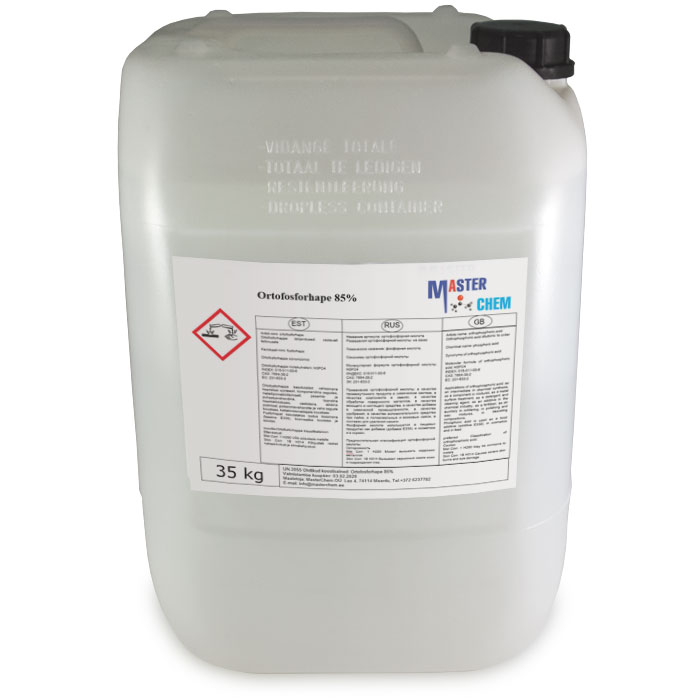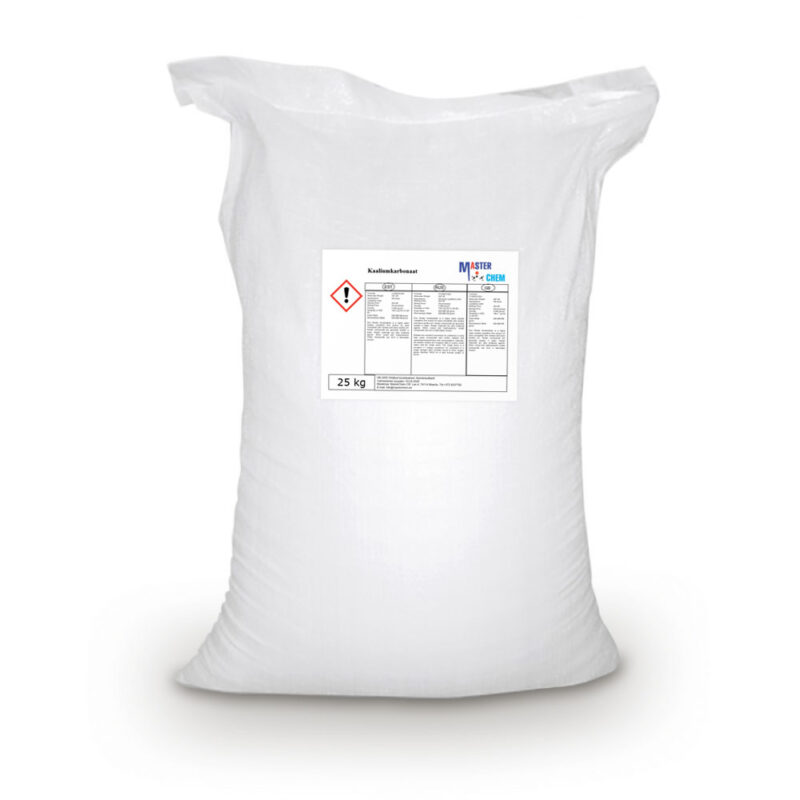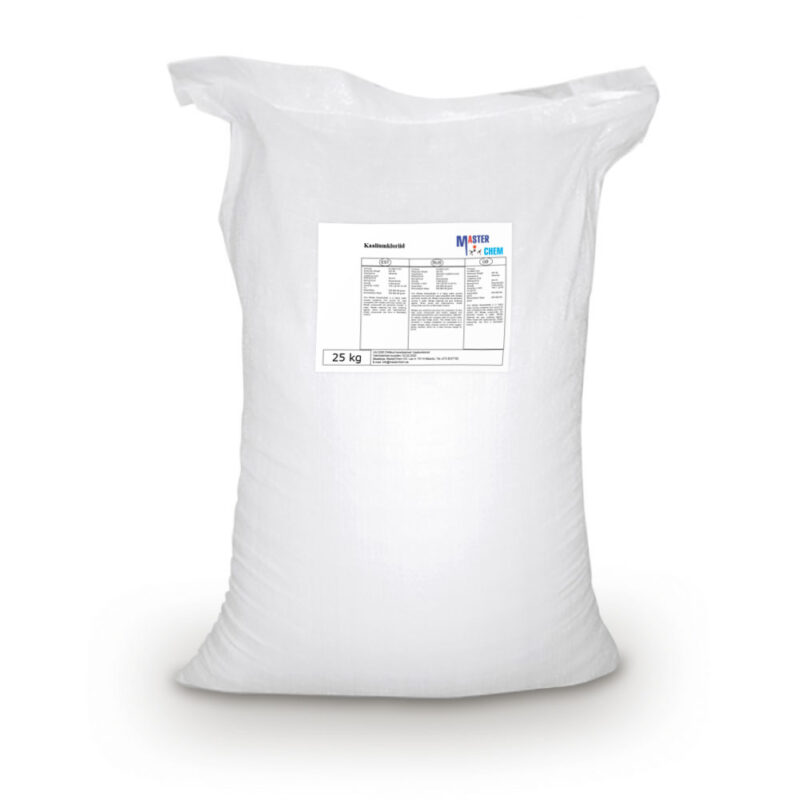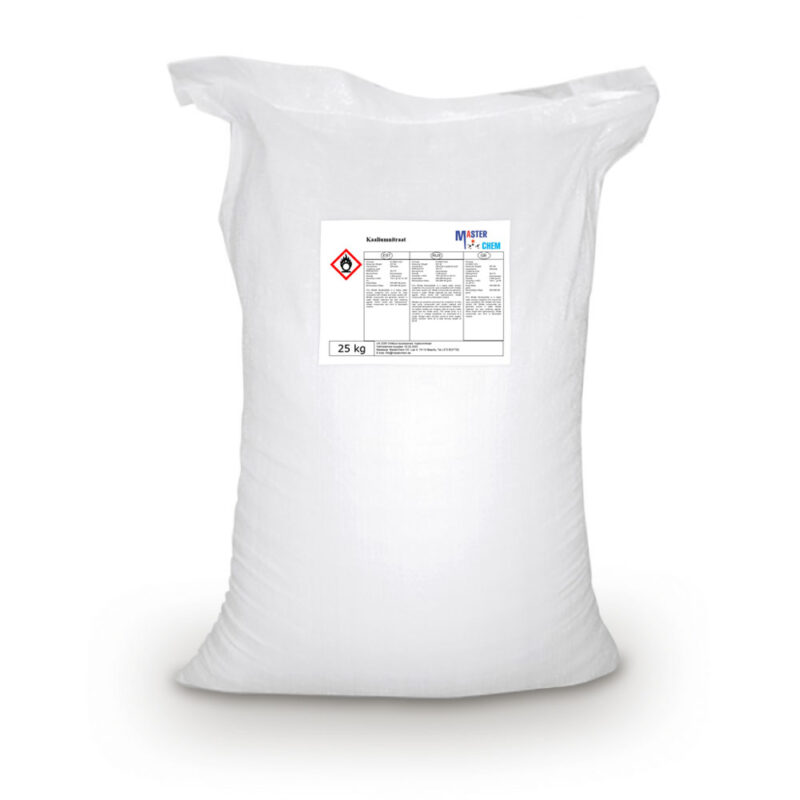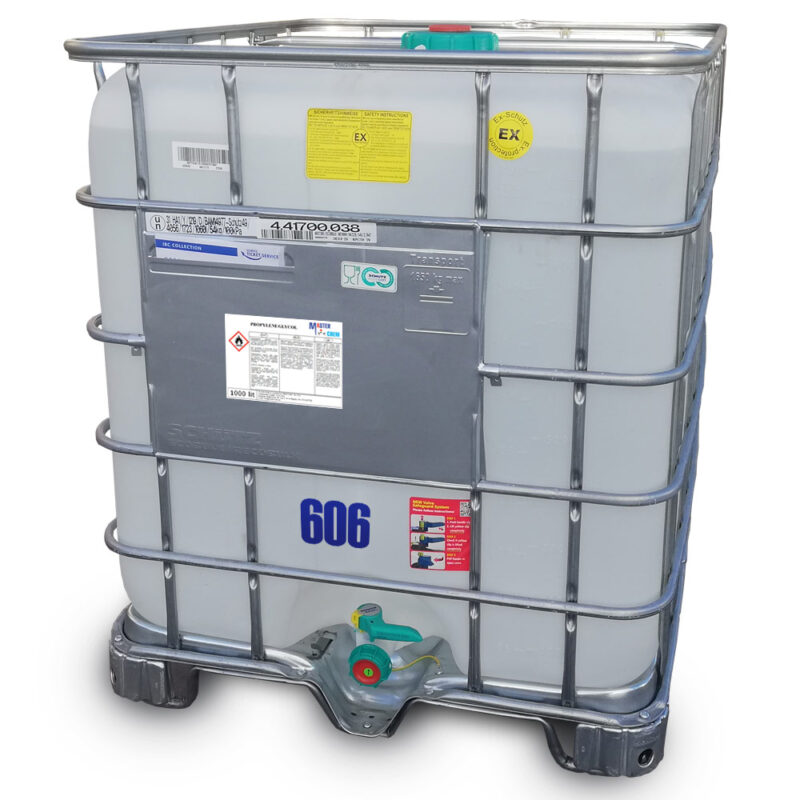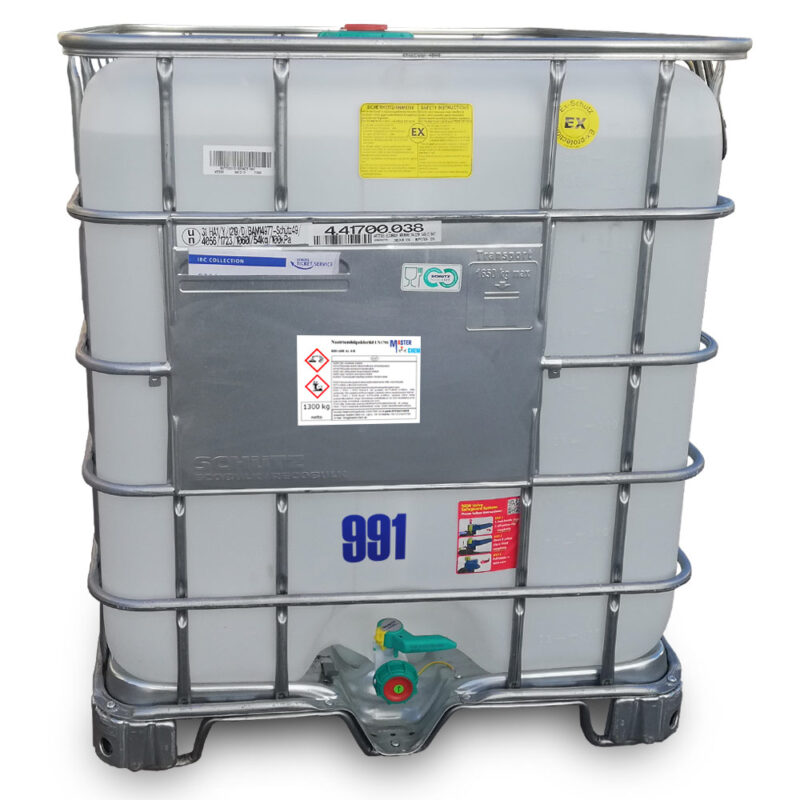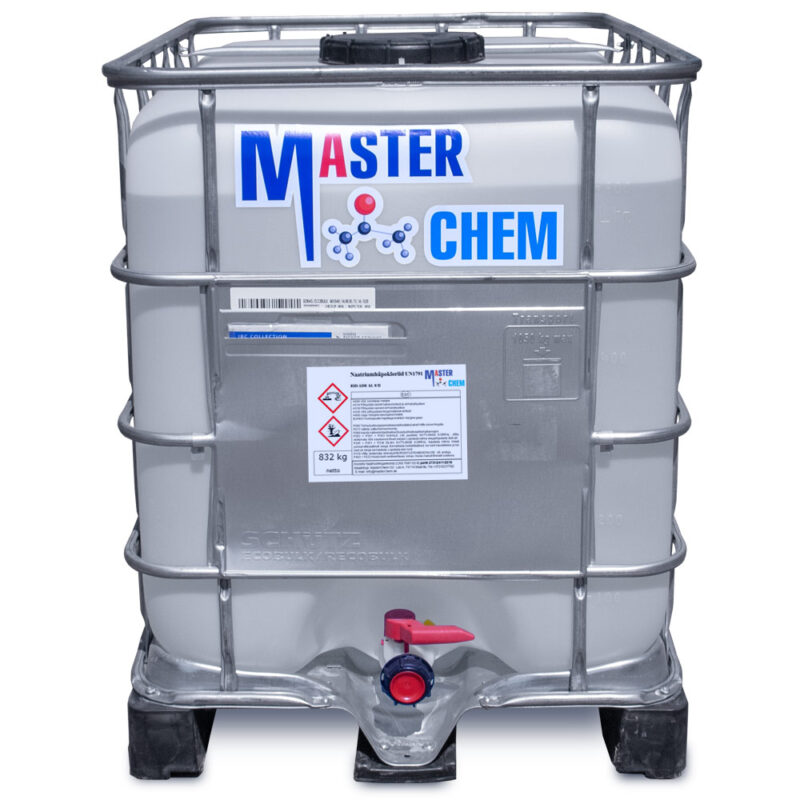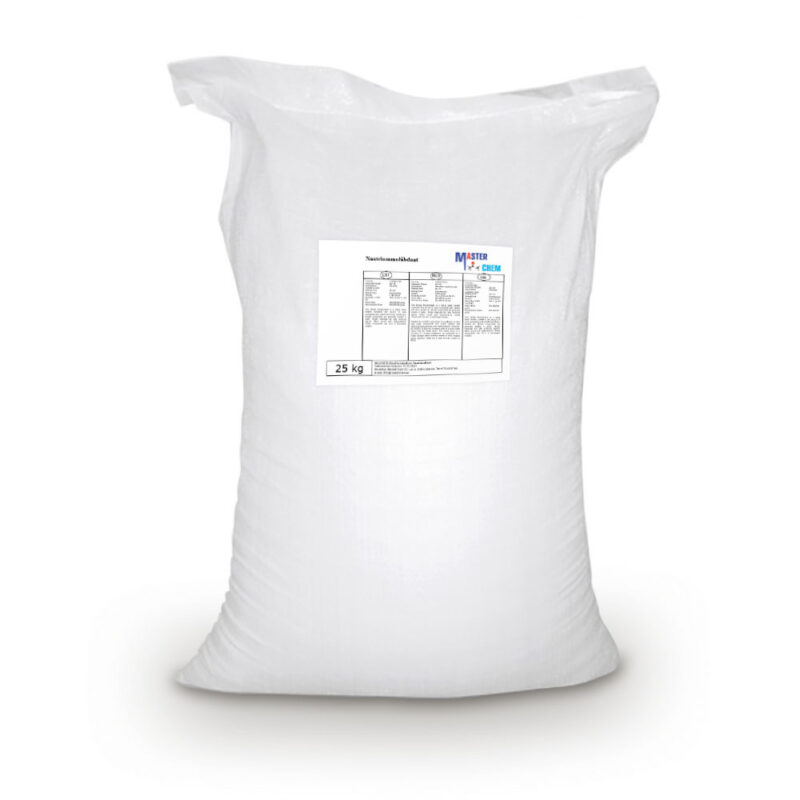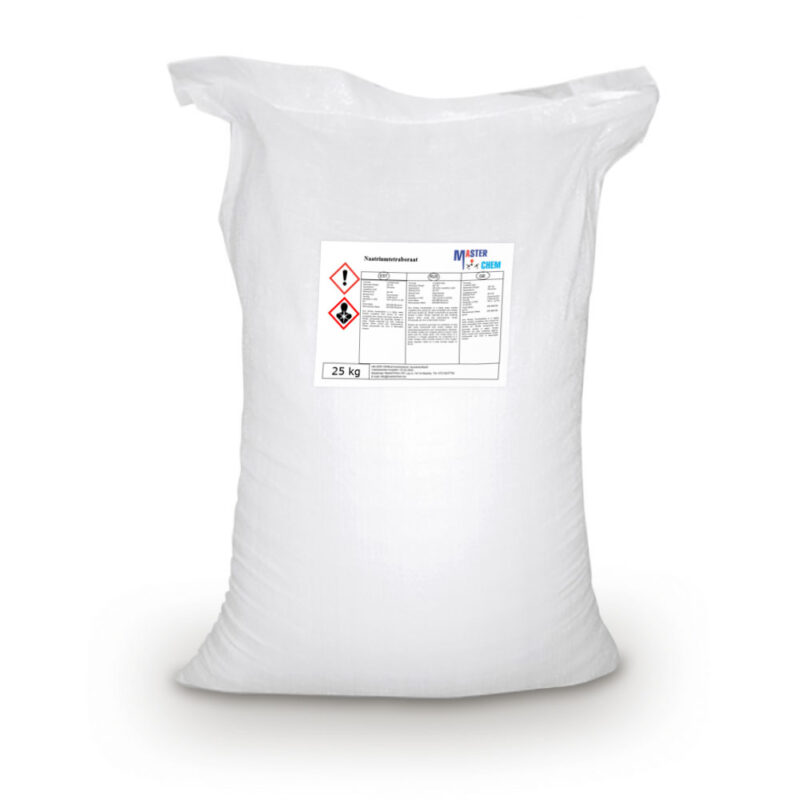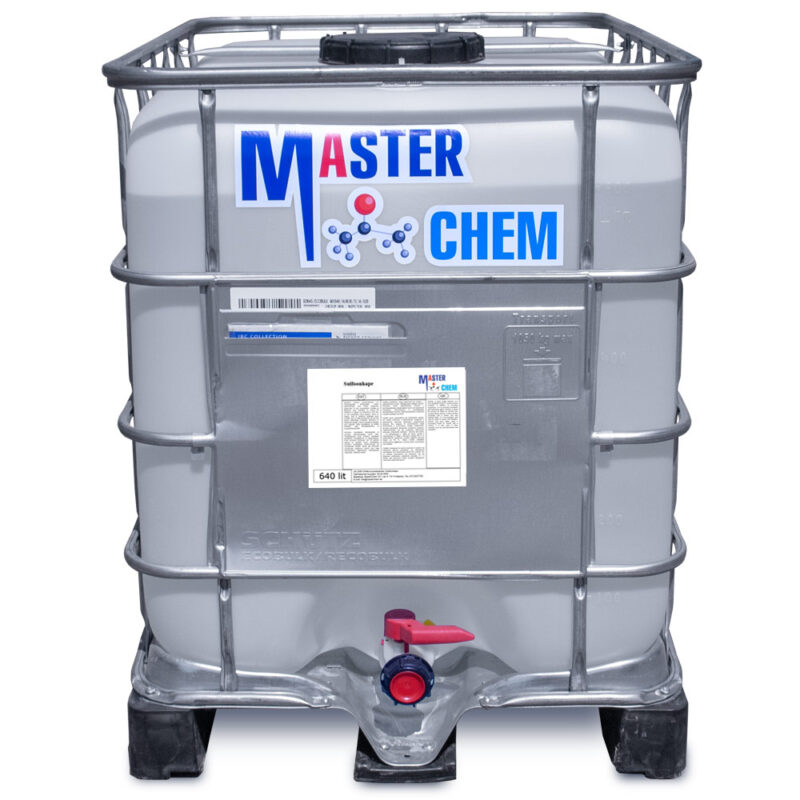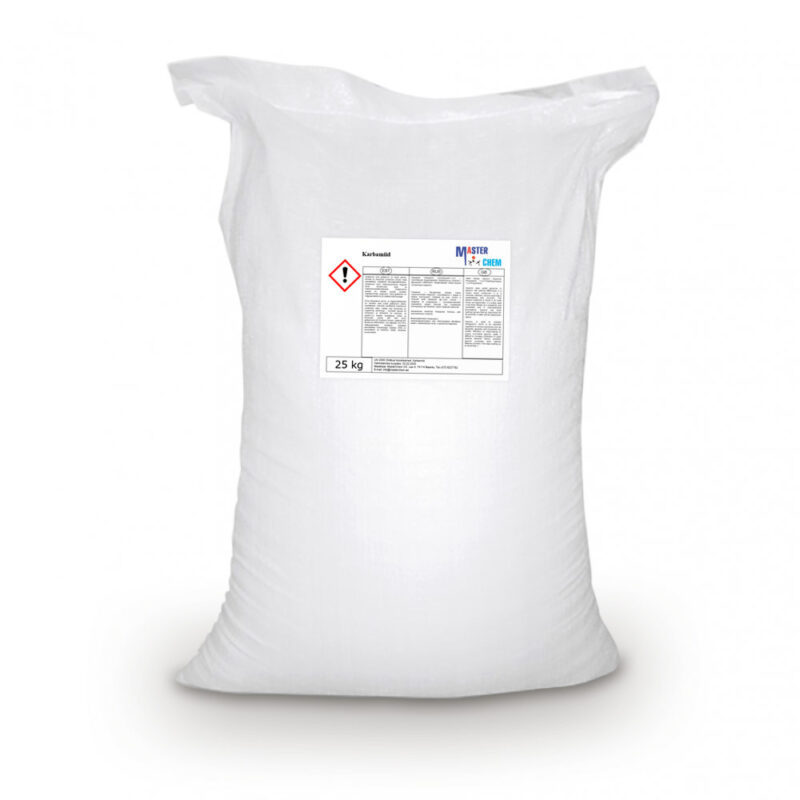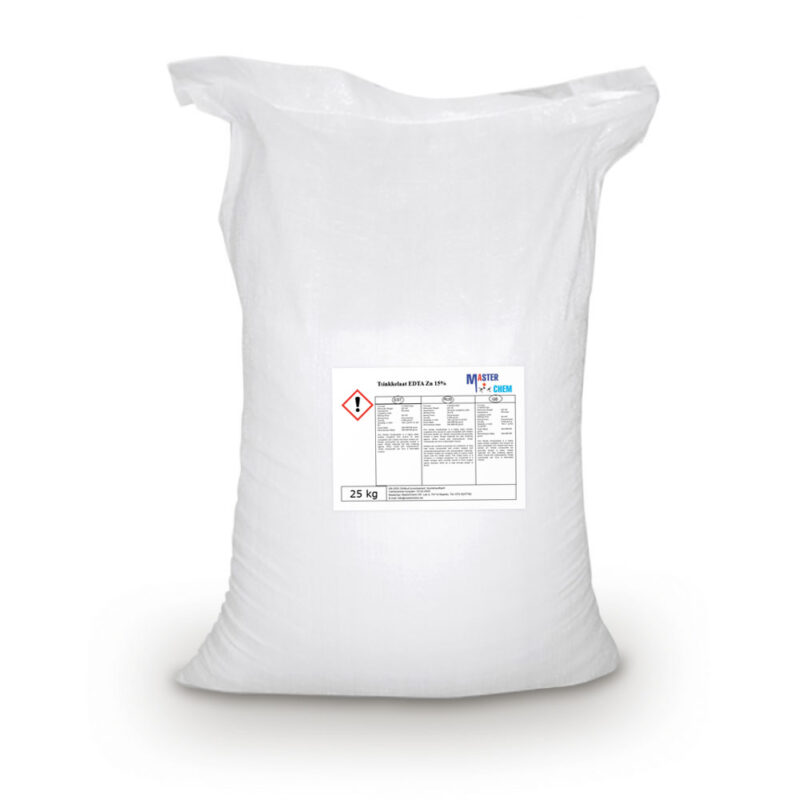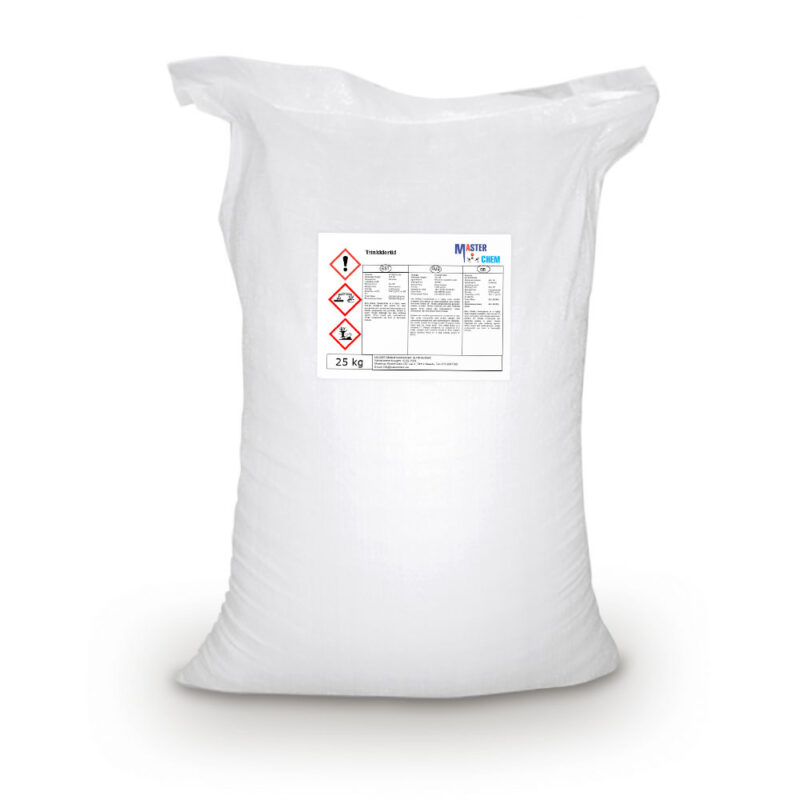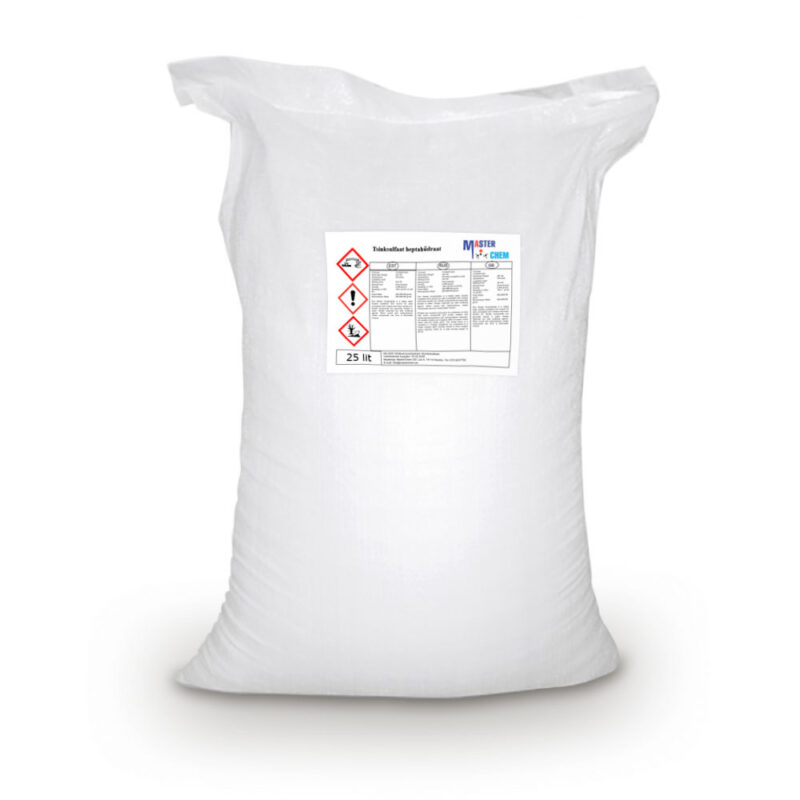Magnesium nitrate (CAS 13446-18-9)
Magnesium nitrate (CAS 13446-18-9)
Magnesium nitrate refers to inorganic compounds with the formula Mg(NO3)2(H2O)x, where x = 6, 2, and 0. All are white solids. The anhydrous material is hygroscopic, quickly forming the hexahydrate upon standing in air. All of the salts are very soluble in both water and ethanol.
Magnesium Sulphate Heptahydrate (CAS 10034-99-8)
Magnesium Sulphate Heptahydrate (CAS 10034-99-8)
Magnesium sulfate or magnesium sulphate (in British English) is a chemical compound, a salt with the formula MgSO4, consisting of magnesium cations Mg2+ (20.19% by mass) and sulfate anions SO2−4. It is a white crystalline solid, soluble in water but not in ethanol.
Magnesium sulfate is usually encountered in the form of a hydrate MgSO4·nH2O, for various values of n between 1 and 11. The most common is the heptahydrate MgSO4·7H2O, known as Epsom salt, which is a household chemical with many traditional uses, including bath salts.
The main use of magnesium sulfate is in agriculture, to correct soils deficient in magnesium (an essential plant nutrient because of the role of magnesium in chlorophyll and photosynthesis). The monohydrate is favored for this use; by the mid 1970s, its production was 2.3 million tons per year. The anhydrous form and several hydrates occur in nature as minerals, and the salt is a significant component of the water from some springs.
Manganese chelate EDT 13% (CAS 15375-84-5)
Manganese chelate EDT 13% (CAS 15375-84-5)
Ethylenediaminetetraacetic acid manganese disodium salt hydrate is a metal chelating compound. Cobalt was analysed complexometrically using ethylenediaminetetra-acetic acid (EDTA) by masking aluminum. Previous studies of manganese-EDTA and manganese-EGT-1 complexes indicated that the &-nitrogen coordination of EDTA resulted in a highly anisotropic spectrum for Mn(II). Lipophilic derivatives of manganese EDTA chelates when incorporated into liposomes confer the greatest hepatic enhancement per micromole of metal ion and have favorable clearance kinetics.
Manganese Sulphate (CAS 100034-96-5)
Manganese Sulphate (CAS 100034-96-5)
Manganese sulfate monohydrate is used to produce manganese by an electrolytic process. The compound is used for dyeing textiles; for producing red glazes on porcelain; in varnish driers; in fertilizers; and in animal feeds to provide manganese as an essential trace element.
MAP/Аmmofos/phosphorus fertilizers (CAS 7722-76-1)
MAP/Аmmofos/phosphorus fertilizers (CAS 7722-76-1)
A granular fertilizer providing open-access phosphorus and low nitrogen to agricultural plants. It is an excellent starter fertilizer applied during sowing (planting). Temperature decrease provides the necessary phosphorus nutrition of plants. It provides temporary acidification ofthe soil around the granule, thus demonstrating some advantages on neutral and alkaline soils.
Monoammonium Phosphate (CAS 7722-76-1)
Monoammonium Phosphate (CAS 7722-76-1)
Ammonium dihydrogen phosphate (ADP), also known as monoammonium phosphate (MAP) is a chemical compound with the chemical formula (NH4)(H2PO4). ADP is a major ingredient of agricultural fertilizers and some fire extinguishers. It also has significant uses in optics and electronics.
Monoammonium phosphate is soluble in water and crystallizes from it as the anhydrous salt in the tetragonal system, as elongated prisms or needles. It is practically insoluble in ethanol.
Solid monoammonium phosphate can be considered stable in practice for temperatures up to 200 °C, when it decomposes into gaseous ammonia NH3 and molten phosphoric acid H3PO4. At 125 °C the partial pressure of ammonia is 0.05 mm Hg.
A solution of stoichometric monoammonium phosphate is acidic (pH 4.7 at 0.1% concentration, 4.2 at 5%).
Monopotassium Phosphate (CAS 7778-77-0)
Monopotassium Phosphate (CAS 7778-77-0)
Monopotassium phosphate (MKP) (also, potassium dihydrogenphosphate, KDP, or monobasic potassium phosphate) is the inorganic compound with the formula KH2PO4. Together with dipotassium phosphate (K2HPO4.(H2O)x) it is often used as a fertilizer, food additive, and buffering agent. The salt often cocrystallizes with the dipotassium salt as well as with phosphoric acid.
Nitric acid 56-58% (CAS 7697-37-2)
The pure compound is colorless, but older samples tend to acquire a yellow cast due to decomposition into oxides of nitrogen and water. Most commercially available nitric acid has a concentration of 68% in water. When the solution contains more than 86% HNO3, it is referred to as fuming nitric acid. Depending on the amount of nitrogen dioxide present, fuming nitric acid is further characterized as red fuming nitric acid at concentrations above 86%, or white fuming nitric acid at concentrations above 95%.
Nitric acid is the primary reagent used for nitration – the addition of a nitro group, typically to an organic molecule. While some resulting nitro compounds are shock- and thermally-sensitive explosives, a few are stable enough to be used in munitions and demolition, while others are still more stable and used as pigments in inks and dyes. Nitric acid is also commonly used as a strong oxidizing agent.
CAS: 7697-37-2
Oiled sulfur (CAS 7704-34-9)
Oiled sulfur (CAS 7704-34-9)
Sulfur (in British English: sulphur) is a chemical element with the symbol S and atomic number 16. It is abundant, multivalent and nonmetallic. Under normal conditions, sulfur atoms form cyclic octatomic molecules with a chemical formula S8. Elemental sulfur is a bright yellow, crystalline solid at room temperature.
Ortofosforhape 85% (CAS 7664-38-2)
Molecular formula of orthophosphoric acid: H3PO4
INDEX: 015-011-00-6
CAS: 7664-38-2
EC: 231-633-2
IUPAC name
Phosphoric acid
Applications of orthophosphoric acid: as an intermediate in chemical synthesis, as a component in mixtures, as a metal surface treatment, as a detergent and cleaning agent, as an additive in the chemical industry, as a fertilizer, as an auxiliary in soldering, in polishing and wax mixtures, in descaling compositions.
Phosphoric acid is used in food as an additive (additive E338), in cosmetics and in feed.
Potassium carbonate (CAS 584-08-7)
Potassium carbonate (CAS 584-08-7)
Potassium carbonate is the inorganic compound with the formula K2CO3. It is a white salt, which is soluble in water. It is deliquescent, often appearing as a damp or wet solid. Potassium carbonate is mainly used in the production of soap and glass.
Applications
– for soap, glass, and dishware production
– as a mild drying agent where other drying agents, such as calcium chloride and magnesium sulfate, may be incompatible. It is not suitable for acidic compounds, but can be useful for drying an organic phase if one has a small amount of acidic impurity. It may also be used to dry some ketones, alcohols, and amines prior to distillation.
– in cuisine, where it has many traditional uses. It is an ingredient in the production of grass jelly, a food consumed in Chinese and Southeast Asian cuisines, as well as Chinese hand-pulled noodles and mooncakes. It is also used to tenderize tripe. German gingerbread recipes often use potassium carbonate as a baking agent, although in combination with hartshorn. Use of potassium carbonate must be limited to a certain amount to prevent harm, and should not be used without guidance.
– as a buffering agent in the production of mead or wine.
– in antique documents, it is reported to have been used to soften hard water.
– as a fire suppressant in extinguishing deep-fat fryers and various other B class-related fires.
– in condensed aerosol fire suppression, although as the byproduct of potassium nitrate.
– as an ingredient in welding fluxes, and in the flux coating on arc-welding rods.
– as an animal feed ingredient to satisfy the potassium requirements of farmed animals such as broiler breeder chickens.
Potassium chloride (CAS 7447-40-7)
Potassium chloride (CAS 7447-40-7)
Potassium chloride (CAS 7447-40-7)
Potassium chloride (KCl, or potassium salt) is a metal halide salt composed of potassium and chlorine. It is odorless and has a white or colorless vitreous crystal appearance. The solid dissolves readily in water, and its solutions have a salt-like taste. Potassium chloride can be obtained from ancient dried lake deposits. KCl is used as a fertilizer, in medicine, in scientific applications, and in food processing, where it may be known as E number additive E508.
As a chemical feedstock, it is used for the manufacture of potassium hydroxide and potassium metal. It is also used in medicine, lethal injections, scientific applications, food processing, soaps, and as a sodium-free substitute for table salt for people concerned about the health effects of sodium.
It is used as a supplement in animal feed to boost the potassium level in the feed. As an added benefit, it is known to increase milk production.
It is sometimes used in solution as a completion fluid in petroleum and natural gas operations, as well as being an alternative to sodium chloride in household water softener units.
Potassium nitrate (CAS 7757-79-1)
Potassium nitrate (CAS 7757-79-1)
Potassium nitrate (CAS 7757-79-1)
Potassium nitrate is a chemical compound with the chemical formula KNO3. It is an ionic salt of potassium ions K+ and nitrate ions NO3−, and is therefore an alkali metal nitrate. It occurs in nature as a mineral, niter (or nitre in the UK). It is a source of nitrogen, and nitrogen was named after niter. Potassium nitrate is one of several nitrogen-containing compounds collectively referred to as saltpetre (or saltpeter in North America).
Major uses of potassium nitrate are in fertilizers, tree stump removal, rocket propellants and fireworks. It is one of the major constituents of gunpowder (black powder). In processed meats, potassium nitrate reacts with hemoglobin and myoglobin generating a blue color.
Potassium sulphate (CAS 7778-80-5)
Potassium sulphate (CAS 7778-80-5)
Potassium sulfate (US) or potassium sulphate (UK), also called sulphate of potash (SOP), arcanite, or archaically potash of sulfur, is the inorganic compound with formula K2SO4, a white water-soluble solid. It is commonly used in fertilizers, providing both potassium and sulfur.
The dominant use of potassium sulfate is as a fertilizer. K2SO4 does not contain chloride, which can be harmful to some crops. Potassium sulfate is preferred for these crops, which include tobacco and some fruits and vegetables. Crops that are less sensitive may still require potassium sulfate for optimal growth if the soil accumulates chloride from irrigation water.
The crude salt is also used occasionally in the manufacture of glass. Potassium sulfate is also used as a flash reducer in artillery propellant charges. It reduces muzzle flash, flareback and blast overpressure. It is sometimes used as an alternative blast media similar to soda in soda blasting as it is harder and similarly water-soluble. Potassium sulfate can also be used in pyrotechnics in combination with potassium nitrate to generate a purple flame.
Propylene glycol (CAS 57-55-6)
Other names: α-Propylene glycol, 1,2-Propanediol, 1,2-Dihydroxypropane, Methyl ethyl glycol (MEG), Methylethylene glycol
Propylene glycol (IUPAC name: propane-1,2-diol) is a synthetic organic compound with the chemical formula C3H8O2. It is a viscous colorless liquid which is nearly odorless but possesses a faintly sweet taste. Chemically it is classed as a diol and is miscible with a broad range of solvents, including water, acetone, and chloroform.
CAS: 57-55-6
Sodium hypochlorite 12 – 15% (CAS 7681-52-9)
Disinfection from COVID-19 should be done with 0.1-0.5% sodium hypochloride solution (WHO and Health Department recommendation)
Sodium molybdate (CAS 7631-95-0)
Sodium molybdate (CAS 7631-95-0)
Sodium molybdate, Na2MoO4, is useful as a source of molybdenum. This white, crystalline salt is often found as the dihydrate, Na2MoO4·2H2O.
The molybdate(VI) anion is tetrahedral. Two sodium cations coordinate with every one anion.
It is used in industry for corrosion inhibition, as it is a non-oxidizing anodic inhibitor. The addition of sodium molybdate significantly reduces the nitrite requirement of fluids inhibited with nitrite-amine, and improves the corrosion protection of carboxylate salt fluids. In industrial water treatment applications where galvanic corrosion is a potential due to bimetallic construction, the application of sodium molybdate is preferred over sodium nitrite. Sodium molybdate has the advantage in that the dosing of lower ppm’s of molybdate allow for lower conductivity of the circulating water. Sodium molybdate at levels of 50-100 ppm offer the same levels of corrosion inhibition as sodium nitrite at levels of 800+ ppm. By utilizing lower concentrations of sodium molybdate, conductivity is kept at a minimum and thus galvanic corrosion potentials are decreased.
Sodium nitrate (CAS 7631-99-4)
Sodium nitrate (CAS 7631-99-4)
Sodium nitrate is the chemical compound with the formula NaNO3. This alkali metal nitrate salt is also known as Chile saltpeter (large deposits of which were historically mined in Chile) to distinguish it from ordinary saltpeter, potassium nitrate. The mineral form is also known as nitratine, nitratite or soda niter.
Sodium nitrate is a white deliquescent solid very soluble in water. It is a readily available source of the nitrate anion (NO3−), which is useful in several reactions carried out on industrial scales for the production of fertilizers, pyrotechnics and smoke bombs, glass and pottery enamels, food preservatives (esp. meats), and solid rocket propellant. It has been mined extensively for these purposes.
Sulfuric Acid 98% (CAS 7664-93-9)
Sulfuric Acid 98% (CAS 7664-93-9)
A sulfonic acid (or sulphonic acid) refers to a member of the class of organosulfur compounds with the general formula R−S(=O)2−OH, where R is an organic alkyl or aryl group and the S(=O)2(OH) group a sulfonyl hydroxide. As a substituent, it is known as a sulfo group. A sulfonic acid can be thought of as sulfuric acid with one hydroxyl group replaced by an organic substituent. The parent compound (with the organic substituent replaced by hydrogen) is the parent sulfonic acid, HS(=O)2(OH), a tautomer of sulfurous acid, S(=O)(OH)2. Salts or esters of sulfonic acids are called sulfonates.
Urea (CAS 57-13-6)
Urea (CAS 57-13-6)
Urea, also known as carbamide, is an organic compound with chemical formula CO(NH2)2. This amide has two –NH2 groups joined by a carbonyl (C=O) functional group.
Urea serves an important role in the metabolism of nitrogen-containing compounds by animals and is the main nitrogen-containing substance in the urine of mammals. It is a colorless, odorless solid, highly soluble in water, and practically non-toxic (LD50 is 15 g/kg for rats).[6] Dissolved in water, it is neither acidic nor alkaline. The body uses it in many processes, most notably nitrogen excretion. The liver forms it by combining two ammonia molecules (NH3) with a carbon dioxide (CO2) molecule in the urea cycle. Urea is widely used in fertilizers as a source of nitrogen (N) and is an important raw material for the chemical industry.
Friedrich Wöhler discovered that urea can be produced from inorganic starting materials, which was an important conceptual milestone in chemistry in 1828. It showed for the first time that a substance previously known only as a byproduct of life could be synthesized in the laboratory without biological starting materials, thereby contradicting the widely held doctrine of vitalism, which stated that only living things could produce the chemicals of life.
Zinc chelate EDTA Zn 15% (CAS 14025-21-9)
Zinc chelate EDTA Zn 15% (CAS 14025-21-9)
Appearance: White fine crystalline powder.
In agriculture and horticulture as the foliar feed, in soil or hydroponics applications.
Zinc chloride (CAS 7646-85-7)
Zinc chloride (CAS 7646-85-7)
Zinc chloride is the name of chemical compounds with the formula ZnCl2 and its hydrates. Zinc chlorides, of which nine crystalline forms are known, are colorless or white, and are highly soluble in water. This white salt is hygroscopic and even deliquescent. Samples should therefore be protected from sources of moisture, including the water vapor present in ambient air. Zinc chloride finds wide application in textile processing, metallurgical fluxes, and chemical synthesis. No mineral with this chemical composition is known aside from the very rare mineral simonkolleite, Zn5(OH)8Cl2·H2O.
Zinc Sulphate Heptahydrate (CAS 7446-20-0)
Zinc Sulphate Heptahydrate (CAS 7446-20-0)
Zinc sulfate is an inorganic compound. It is used as a dietary supplement to treat zinc deficiency and to prevent the condition in those at high risk. Side effects of excess supplementation may include abdominal pain, vomiting, headache, and tiredness.
The most common form includes water of crystallization as the heptahydrate, with the formula ZnSO4•7H2O. It was historically known as “white vitriol”. Zinc sulfate and its hydrates are colourless solids.

